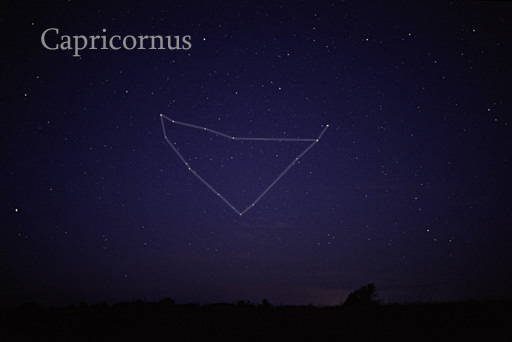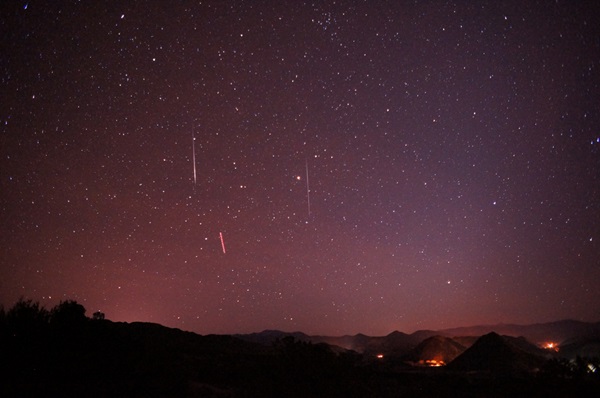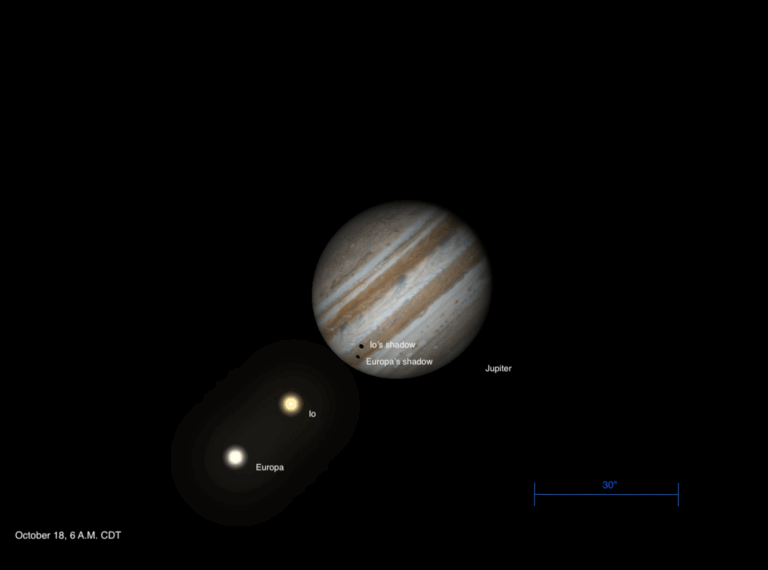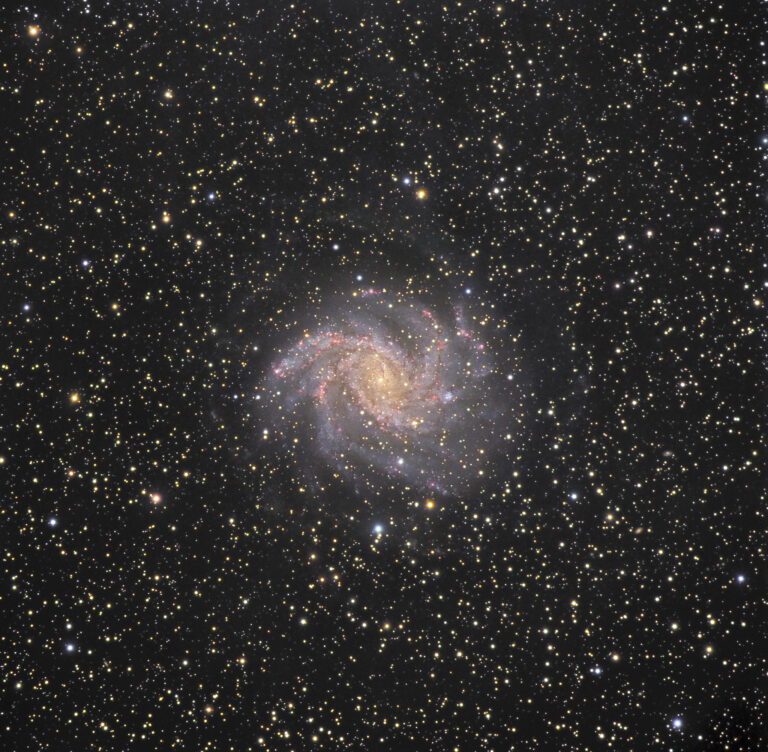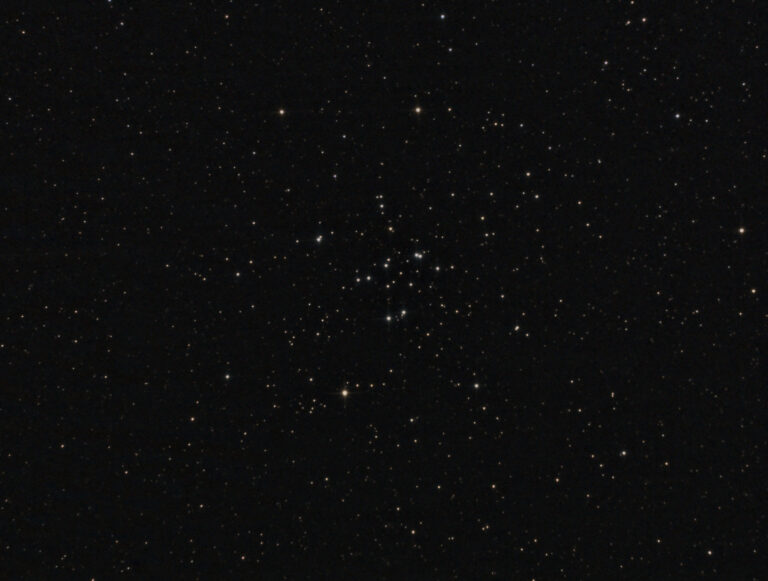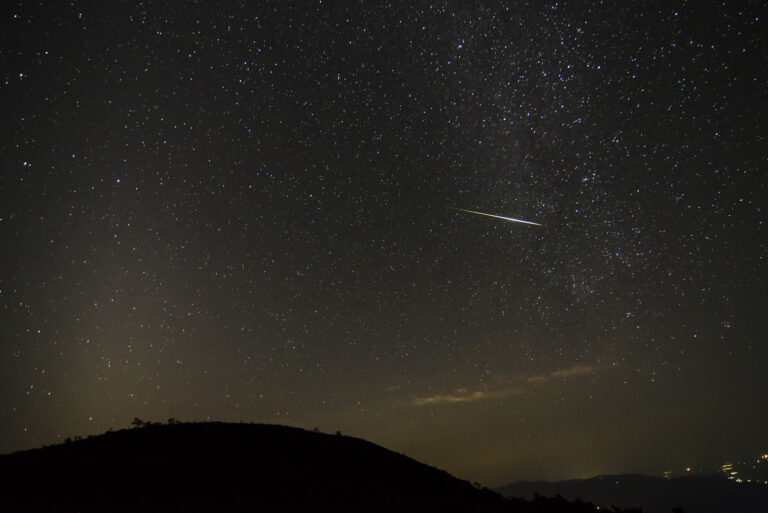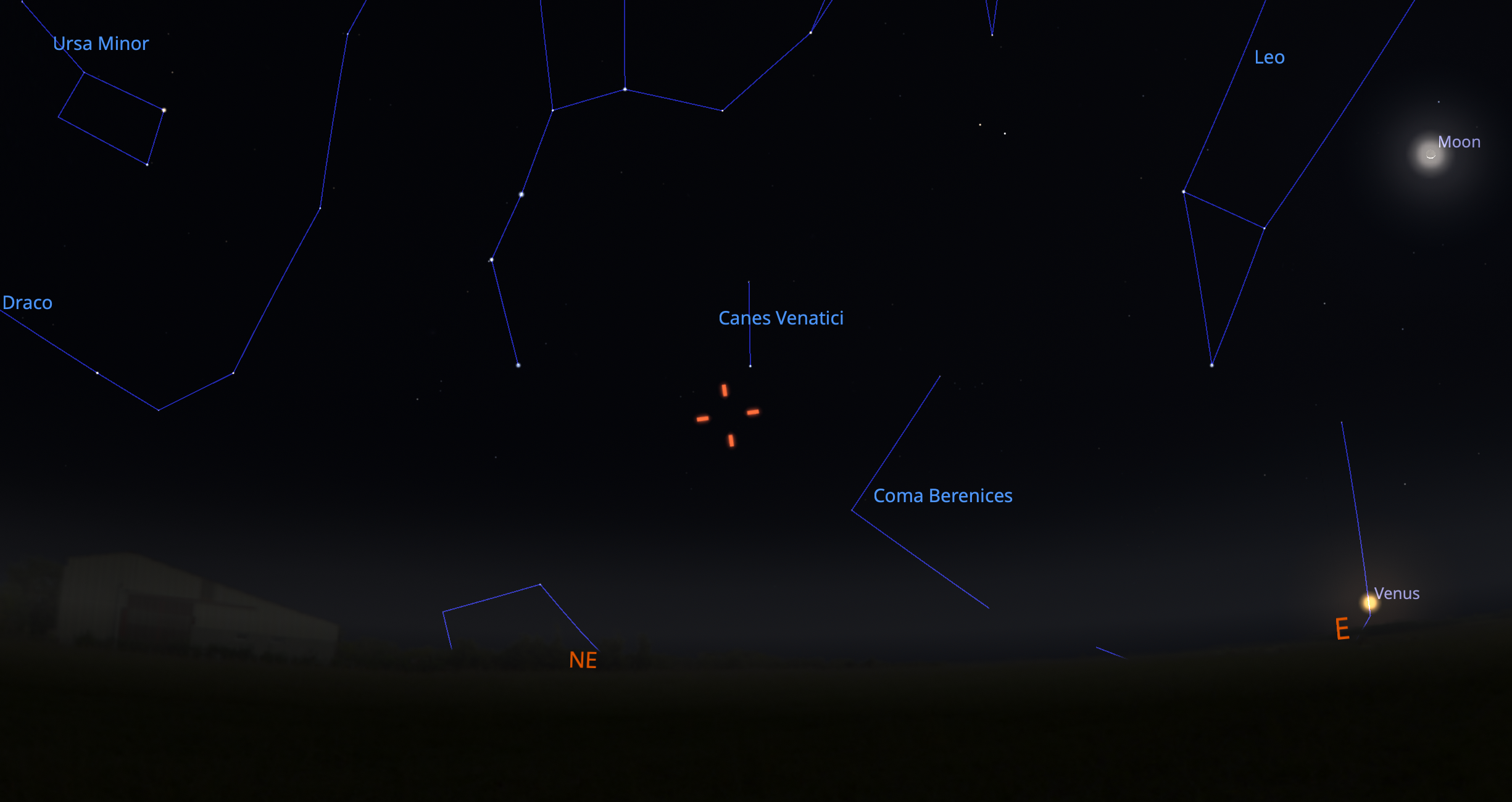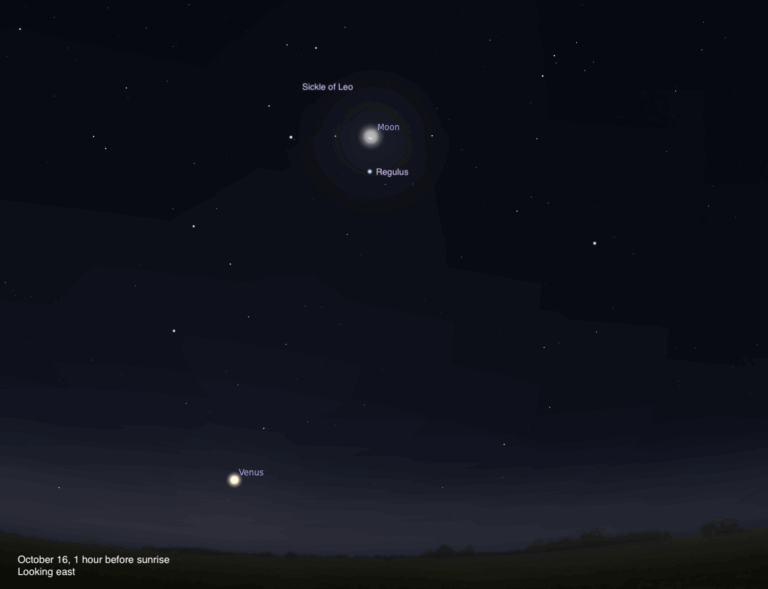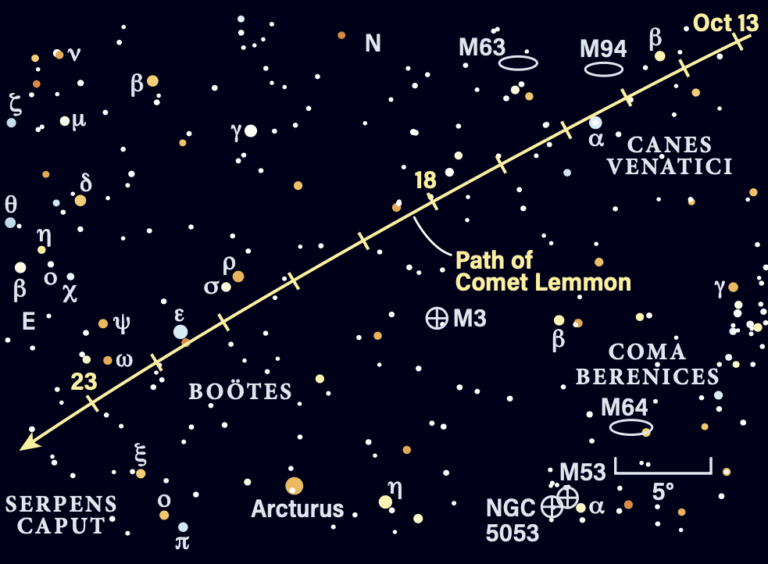Key Takeaways:
Friday, December 2
The waxing crescent Moon glows in the southwestern sky as darkness falls. It appears 11 percent lit and stands 8° to the right of Venus. (It will stand a similar distance above the planet tomorrow evening.) Although the Moon points the way to Venus, the brilliant planet really doesn’t need the help. Shining at magnitude –4.2, it blazes in the southwestern sky after sunset all week, and it remains on view for more than an hour after twilight fades away. A telescope shows the planet’s disk, which spans 17″ and appears about two-thirds lit.
Saturday, December 3
While Venus dominates the evening sky, Jupiter rules the predawn hours. The giant planet rises more than four hours before the Sun and climbs 30° above the southeastern horizon by the time twilight starts to paint the sky. Jupiter shines brilliantly at magnitude –1.8 and shows a 33″-diameter disk when viewed through a telescope. A small scope also reveals the planet’s four bright moons. And for people in western North America, one of these satellites plays a game of hide-and-seek this morning. Ganymede, the solar system’s largest moon, is hidden in Jupiter’s shadow as the planet rises. The satellite emerges from the shadow at 4:02 a.m. PST and remains in sunlight until it slips behind Jupiter’s disk at 5:24 a.m.
Sunday, December 4
The waxing crescent Moon’s evening ascent brings it to a position 6° to the right of Mars this evening. Our satellite appears one-quarter lit, and the cusps of its crescent point toward the ruddy planet. Mars puts on a nice show all week, however. The magnitude 0.7 world lies among the background stars of Capricornus and appears nearly 30° high in the south-southwest after darkness falls. A telescope reveals the planet’s 6″-diameter disk, though you’ll be hard-pressed to see much surface detail except under exceptional viewing conditions.
This is a good week to target the dwarf planet Ceres, the largest object in the asteroid belt between the orbits of Mars and Jupiter. It lies among the background stars of northern Cetus and appears more than halfway to the zenith in the southern sky during early evening. To find it, first locate magnitude 3.6 Theta (q) Ceti, then head 8° north to the magnitude 5.6 star 42 Ceti. Eighth-magnitude Ceres lies 3° east of 42 Ceti all week.
Tuesday, December 6
Brilliant Venus passes 0.8° south of the 9th-magnitude globular star cluster M75 this evening. Use large binoculars or a telescope with a low-power eyepiece to get the best view of this conjunction. The two objects reside in far eastern Sagittarius, though the planet will cross into neighboring Capricornus by tomorrow evening.
Wednesday, December 7
First Quarter Moon occurs at 4:03 a.m. EST. The Moon doesn’t rise until shortly after noon local time, however, and by the time darkness sets in, our satellite appears 57 percent illuminated. It then lies in northeastern Aquarius, some 25° below the Great Square of Pegasus.
Although people in the Northern Hemisphere won’t experience the shortest day of the year for another two weeks (at the winter solstice December 21), those at 40° north latitude will see the Sun set earlier today than at any other time this year. Tomorrow’s sunset will arrive about two seconds later and, by the solstice, our star will set three to four minutes later than today. The date of earliest sunset depends on latitude — the farther north you live, the closer it occurs to the solstice.
Thursday, December 8
The Geminid meteor shower gets underway this week. Although the shower doesn’t peak until the night of December 13/14, you may get a better view now because the Full Moon will share the sky on the peak night. For the best views, observe after the waxing gibbous Moon sets — around 12:30 a.m. local time this morning and about 70 minutes later each successive day — and before twilight begins around 5:30 a.m. To tell a Geminid meteor from a random dust particle burning up in Earth’s atmosphere, trace the streak of light’s path backward. A shower meteor will appear to originate from the constellation Gemini the Twins.
With December now well underway, people’s thoughts naturally turn to the onset of winter. As if on cue, the coldest season’s most conspicuous constellation now appears prominent in the evening sky. Orion the Hunter lies low in the east at 8 p.m. local time and climbs to its peak due south around midnight. Look for three 2nd-magnitude stars in a short line that form the Hunter’s belt. The constellation’s brightest stars are ruddy Betelgeuse and blue-white Rigel.
Saturday, December 10
After the Sun sets this evening, look low in the southwest for Mercury. For observers at 40° north latitude, the innermost planet lies 7° above the horizon 30 minutes after sunset (it appears somewhat higher the farther south you live). Binoculars will help you to pick the magnitude –0.5 object out of the twilight glow. Today marks the peak of Mercury’s evening apparition because it now lies at its maximum elongation from the Sun (21°).
Saturn passes behind the Sun from our perspective, a configuration astronomers call solar conjunction, at 7 a.m. EST. Needless to say, our star’s glare makes it impossible to see the planet. Saturn will return to view before dawn at the end of December.
Sunday, December 11
A lone bright star now hangs low in the south during early evening. First-magnitude Fomalhaut — often called “the Solitary One” — belongs to the constellation Piscis Austrinus the Southern Fish. From mid-northern latitudes, it climbs 20° above the horizon at its best. How solitary is Fomalhaut? The nearest 1st-magnitude star to it, Achernar at the southern end of Eridanus the River, lies some 40° away.

